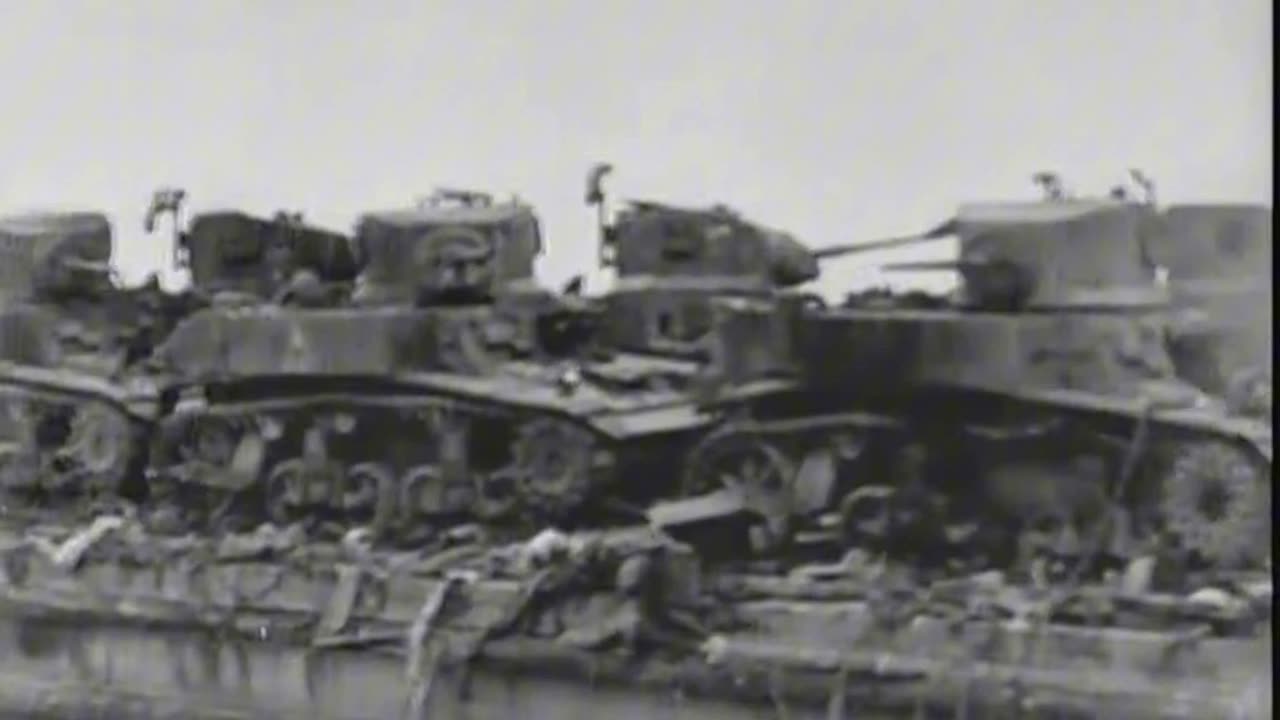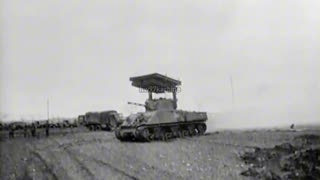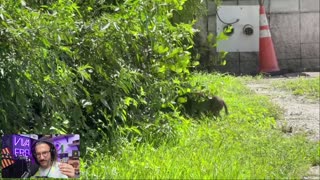Premium Only Content

M3A1 Stuart tanks in Soviet service after the failed landings at South Ozereika on February 4th 1943
In early February, 1943, the Soviet winter counteroffensive, starting around Stalingrad a little over 2 months previously had almost driven the Germans out of the Caucasus.
The latter found themselves encircled on the Taman peninsula and pressed against the shores of the Black Sea. In order to outflank the German defense, the Northern Caucasus Front launched an amphibious landing operation at Ozereika bay. Thirty M3A1 tanks of the 563rd Independent Tank Battalion were loaded on three "bolinder" type barges for the landings at South Ozereika.
A heavy naval bombardment and air strikes began 45 minutes after midnight and lasted over two hours. For the first time in naval warfare, several vessels had “Katyusha” multiple rocket launchers mounted on them. The naval bombardment was largely ineffective due to a lack of fire correction, but it did succeed in alerting the German and Romanian defenses.
In the weeks preceding the operation, numerous reconnaissance parties had landed on the beach. They had been spotted by the Germans and Romanians and the defenders were prepared for a possible amphibious landing.
At 0335 on February 4, six cutters packed with 300 naval infantrymen darted toward the Axis-occupied shore. The defenses came alive. The bulk of the defenders on this stretch of the shoreline were from the Romanian 10th Infantry Division. The Germans were represented in small but effective numbers of specialist troops, mainly field and antiaircraft artillery batteries and searchlight crews. Well-manned searchlights reached out and found the advancing Soviet craft, which immediately came under heavy artillery, mortar, and machine-gun fire.
Two cutters were hit right away and one of them, SKA-051, exploded. The resulting losses cut the assault force by a third, with only 200 out of 300 men actually landing. The loss of SKA-051 was doubly significant because the commander of this spearhead force, Captain 3rd Rank (Lieutenant Commander) A.P. Ivanov, was killed, leaving the troops without effective command and control.
Since Ivanov was dead, there was no one to give the bolinders the signal to advance closer to the shore. Roughly half an hour after the landing began, the surviving naval infantrymen still were not able to suppress the German and Romanian fire. Their foothold on the beach was very tenuous. It is unknown who gave the bolinders the command to move in, but they began to creep forward. These vulnerable landing craft loaded with tanks represented a gunner’s dream: slow, fat targets. The German searchlights easily spotted the approaching bolinders.
Immediately, the bolinders came under fire. The very first hits on Bolinder No. 2 and its tugboat Gelendzhik caused serious damage and set the vessels on fire. Still over 200 meters away from the shore, both vessels began to sink. The 350 men on board—naval infantrymen and tank and vessel crews—were forced to jump into the freezing water and swim ashore under fire. All 10 tanks on board, a third of the total armored force, were lost.
The two remaining bolinders and their tugs continued to doggedly move toward the shore. A hundred meters from the shore, another bolinder ran aground on an underwater steel hedgehog obstacle. The barge began to rapidly settle to the bottom. Luckily, the tanks were able to begin disembarking due to the shallow depth at this location.
The immobile bolinder became a fixed target for Romanian mortars and was soon set ablaze. Despite desperate and heroic attempts by the crew to put out the fire, it spread rapidly. Soon the flames reached ammunition stored aboard and the bolinder exploded. Still, seven of the 10 tanks aboard were able to disembark and reach the shore. They immediately entered the fierce fight raging on land. The fight in the dark was at close quarters and often hand-to-hand.
The German searchlights, overhead flares, and the fires aboard the burning ships illuminated ample targets for the defenders, but the appearance of Soviet tanks on shore demoralized the Romanian soldiers.
At this time, a third bolinder, which had fallen behind on the approach, began its run at the shore. Both the bolinder and its tow-ship, the cutter SP-19, were hit. The tow cable was severed, and the barge began to turn and drift. Despite a fire raging aboard, the crew was able to maneuver the bolinder close to the shore, and some of the tanks began to unload. Others were engulfed by the flames. After a day of fierce fighting the few tanks that did manage to fight their way inland had been put out of action.
-
 2:45
2:45
hw97karbine
3 days agoT34 Calliope rocket launcher mounted on an M4 Sherman tank in action in 1945
481 -
 19:53
19:53
Stephen Gardner
12 hours ago🔥EXPOSED: Charlie Kirk Shooter's Trans Partner Tells FBI EVERYTHING!
63.3K322 -
 2:47:25
2:47:25
BlackDiamondGunsandGear
8 hours agoAfter Hours Armory / RIP Charlie Kirk / What we know
38.6K6 -
 29:09
29:09
Afshin Rattansi's Going Underground
1 day agoThe Political Life of Malcolm X: Busting the Myths (Prof. Kehinde Andrews)
49.9K13 -
 2:47:25
2:47:25
DLDAfterDark
8 hours ago $5.47 earnedThe Assassination of Charlie Kirk - Just What We KNOW
30.4K6 -
 1:33:56
1:33:56
MattMorseTV
9 hours ago $40.19 earned🔴Exposing his PARTNER IN CRIME.🔴
85K282 -
 1:26:51
1:26:51
vivafrei
13 hours agoCharlie Kirk Assassination - When Peaceful Discussion Becomes Impossible - With Jose Vege
106K250 -
 2:04:12
2:04:12
Mally_Mouse
1 day ago🌶️ 🥵Spicy BITE Saturday!! 🥵🌶️- Let's Play: Supermarket Together
52.4K3 -
 1:15:37
1:15:37
BooniesHQ
13 hours ago $7.43 earnedGame Of SKATE Donny Hixson Vs. Chris Massie: Boonies Skate Night 2
69.4K7 -
 2:56:25
2:56:25
Barry Cunningham
14 hours agoTHE TAKING OF CHARLIE KIRK HAS IGNITED A FLAME! AND A BREAKING (BUT NOT SHOCKING) UPDATE!
120K126